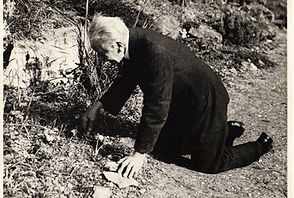A brief history
Myddelton House was built in the reign of George III circa 1812 and completed in 1818. It was built by Henry Carrington Bowles (1763-1830) one of five generations of print and map makers, based at St Paul’s Churchyard, London. It replaced an earlier Elizabethan property, Bowling Green House where Bowles had lived with his wife who died in 1812. After her death, Bowles built the new house in a then fashionable white brick from Suffolk and named it Myddelton House in honour of Sir Hugh Myddelton, an engineering genius who created the New River. A section of the New River had bisected the garden from 1613 until 1968.
When Bowles died in 1830 the house was passed to his son, also Henry Bowles who later bequeathed it in 1852 to his nephew, Henry Carrington Bowles Treacher. Treacher assumed the name Bowles by Royal Licence in order to inherit the estate, thus becoming Henry Carrington Bowles Bowles. It’s these initials that can be seen in monogram on the newly restored main gate at the end of the drive.
The youngest son of five children to Henry Carrington Bowles Bowles and his wife Cornelia was Edward Augustus “Gussie” Bowles, born in 1865 who became one of the great gardeners of the 20th century. He originally trained for the church, but family tragedies caused him to change course and he remained at Myddelton House and developed the remarkable garden as a self-taught horticulturist.
For many years people came from all over the country to visit. He became an expert on many plants, particularly the Crocus and was dubbed “The Crocus King”.
The connection with the Bowles family is still maintained today and Brigadier Andrew Henry Parker Bowles is the current President of the E A Bowles of Myddelton House Society.
The beautiful Victorian Glasshouse range is open to the public. The restoration of the Kitchen Gardens led to the discovery of the foundations of the original glasshouse range. A collection of tender plants was transferred from the 1950s London School of Pharmacy glasshouses, which were subsequently demolished. Unique details have been kept in the designs, such as four climatic zones, a vine house complete with gauged arches to allow vine roots to remain outside and the vines to grow inside and a sunken glasshouse that would have been used to grow fruit such as melons and cucumbers.






.png)





.jpg)










_MHG_EA%20Bowles.jpg)
_MHG_RHS%20coll_.jpg)

.jpg)
.jpg)